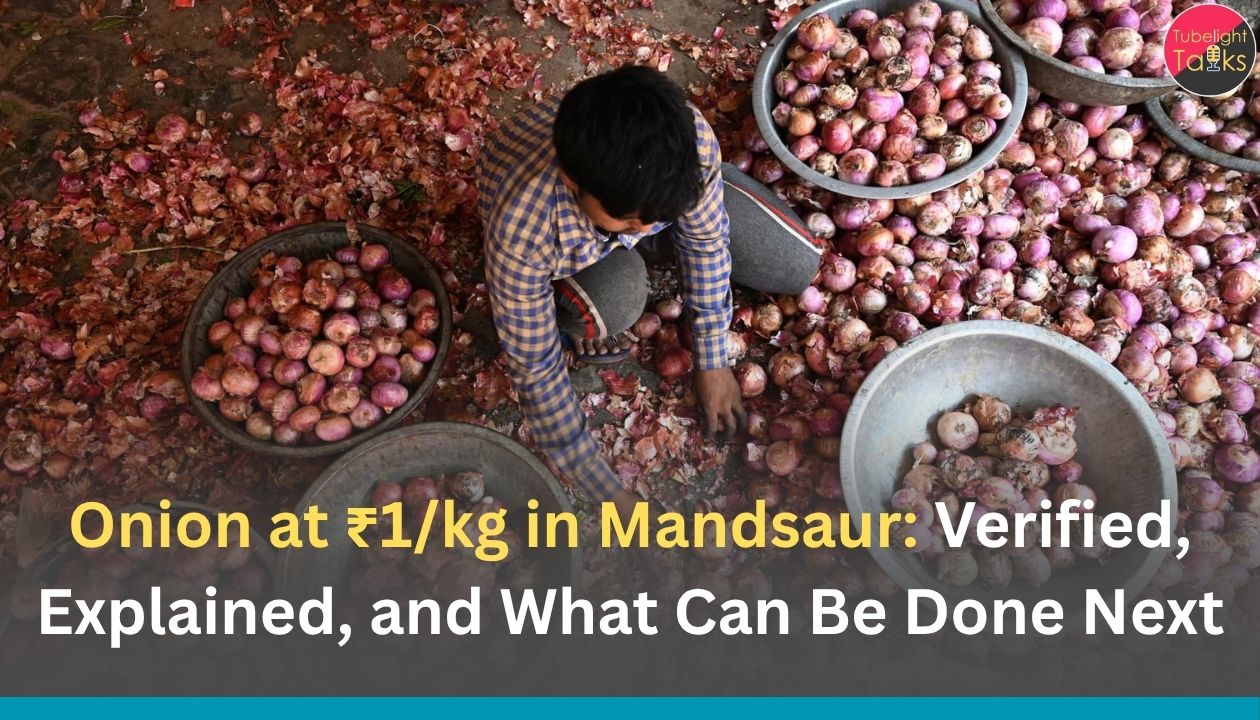Cabinet Approves New Export: The Union Cabinet has approved a two-part package to fortify India’s export engine: a ₹25,060-crore Export Promotion Mission (EPM) for FY26–FY31 and a ₹20,000-crore Credit Guarantee Scheme for Exporters (CGSE) that promises 100% guarantee coverage via NCGTC for additional collateral-free credit. The move—announced on November 12, 2025—targets MSMEs, first-time exporters and labour-intensive sectors, and consolidates fragmented promotion programmes into a single, outcome-driven framework. Alongside liquidity support, the package is pitched as India’s answer to turbulent global trade conditions, with the government signalling speed, scale and digital delivery.
The Announcement at a Glance
- Export Promotion Mission (EPM): ₹25,060 crore over six years to strengthen export competitiveness through a unified, digitally driven framework, moving away from multiple standalone schemes. Focus cohorts: MSMEs, first-time exporters, labour-intensive sectors.
- Credit Guarantee Scheme for Exporters (CGSE): ₹20,000 crore in additional collateral-free credit, backed by 100% NCGTC guarantee; benefits extend to MSME and non-MSME exporters alike.
- Total package size: ₹45,060 crore, as also reported by mainstream business dailies.
What the Minister Highlighted
Summarising the Cabinet green-lights, Union Commerce & Industry Minister Piyush Goyal underscored two pillars—EPM and CGSE—as the core of the export support package. See his post here for the key bullets and visuals:
The messaging aligns with the PIB readouts on EPM’s unified design and CGSE’s 100% guarantee architecture through NCGTC.
Why Now? The Headwinds and the Policy Logic
Global trade has been volatile in 2024–25, with slower demand and heightened tariff risks in key markets. Government briefings and media reporting frame EPM/CGSE as part of India’s response to such shocks—shoring up competitiveness while easing credit for exporters facing tighter margins and delayed receivables. Press coverage explicitly links the package to tariff pressures and the need for liquidity + market access interventions.
Deep Dive: Export Promotion Mission (EPM)
What EPM Is Designed to Do
PIB describes EPM as a comprehensive, flexible, digital-first mission that consolidates export promotion into a single, outcome-based mechanism. It will operate across FY26–FY31, targeting MSMEs, new-to-export firms, and labour-intensive sectors with coordinated support that can adapt to fast-changing trade conditions. The implementation matrix involves Department of Commerce, MSME Ministry, Finance Ministry, financial institutions, and Export Promotion Councils (EPCs).
Expected Building Blocks (as per official briefings)
- Unified scheme architecture replacing fragmented programmes; outcome tracking and digital dashboards.
- Targeted facilitation for priority sectors (textiles, leather, engineering goods, marine products, gems & jewellery—examples cited in policy explainers covering the Cabinet decision).
- State and EPC alignment to reduce duplication, improve market intelligence and trade fair/mission ROI.
What Success Could Look Like
A successful EPM would raise the export readiness of smaller firms, cut time-to-market for first-time exporters, and standardise support (market development, certifications, logistics facilitation) in a way legacy schemes struggled to deliver consistently. EPM’s single-window ethos and digital monitoring are central to that promise, per the Cabinet note.
Deep Dive: Credit Guarantee Scheme for Exporters (CGSE)
The Credit Problem It Tackles
Exporters—especially MSMEs—often face tight working capital cycles, LC confirmation costs, and collateral constraints just when orders ramp up. The Cabinet has cleared CGSE, enabling member lenders to extend up to ₹20,000 crore in collateral-free credit backed by 100% guarantee via NCGTC. This is meant to unlock liquidity, support market diversification, and protect jobs in export-dependent clusters.
How CGSE Will Work (from the official note)
- Guarantee agency: NCGTC (National Credit Guarantee Trustee Company).
- Coverage: 100% guarantee to lenders for eligible export credit—both MSME and non-MSME exporters.
- Policy goals: Liquidity, employment retention, scale-up to new markets, competitiveness.
CGSE sits alongside India’s other guarantee frameworks (e.g., CGTMSE for domestic MSME credit in general), but is export-facing by design, with contours laid out in Budget follow-ups and guarantee programme documents.
Who Stands to Benefit?
MSMEs and First-Time Exporters
The EPM concentrates resources where export readiness gaps are widest. Combined with CGSE’s guarantee comfort for banks, this could widen access to pre- and post-shipment finance without onerous collateral, particularly in clusters across textiles, leather, engineering components and processed foods.
Labour-Intensive Sectors
Policy explainers around the Cabinet decision highlight labour-absorbing sectors as priorities—where even small order wins can create local employment multipliers. The mission format also allows quick reallocations if global demand shifts.
States and EPCs
A unified mission should reduce overlap in state and EPC schemes, aligning trade missions, buyer-seller meets, and standards/certification support with clearer KPIs and data-sharing.
Will This Offset Tariff Shocks?
No single scheme can fully neutralise a large external tariff. But the combination of competitiveness spending (EPM) and cheaper capital (CGSE)—rolled out swiftly—can help firms hold orders, absorb costs, and pivot to alternative markets. Media reporting frames the package as part of India’s broader response to tariff-linked stress, pending parallel diplomatic and trade-negotiation tracks.
Implementation: Timelines, Governance, and What to Watch
Timelines
- Cabinet approval: Nov 12, 2025 (PIB posts at ~8:15 pm for EPM; ~8:23 pm for CGSE).
- EPM duration: FY26–FY31 with periodic review and adaptive allocations.
Governance & Delivery
- Lead: Department of Commerce in coordination with MSME/Finance Ministries, EPCs, FIs, and states.
- Digital stack: Expect application/approval portals, dashboards, outcome tracking and grievance redressal designed for exporters.
What to Watch Next
- Scheme guidelines/handbooks with eligibility, cost coverage, caps and documentation—especially for CGSE onboarding by banks/NBFCs.
- Sectoral allocations and performance metrics under EPM.
- State-EPC calendars: trade fairs, buyer missions, certification drives, logistics facilitation windows.
Sector-Wise Takeaways (Illustrative)
Textiles & Apparel
EPM’s market development + standards play and CGSE’s working capital cushion can help with fashion cycles, compliance audits, and FTA-led opportunities once negotiations conclude.
Engineering Goods & Auto Components
Financing buffers can ease tooling and capex lags; mission-mode assistance can speed certifications and aftermarket access to new geographies.
Leather/Footwear, Gems & Jewellery, Marine
High labour intensity means even moderate export recoveries translate into jobs; CGSE can help bridge receivable cycles in volatile seasons while EPM supports trade promotion and quality upgrades.
How This Differs from Past Promotion Schemes
Unlike legacy incentives dispersed across ministries, EPM is positioned as a single, outcome-driven umbrella with digital monitoring and the ability to reallocate quickly as markets move—PIB calls it a “strategic shift from multiple fragmented schemes.”
Practical Guide: What Exporters Should Do Now
Prepare for EPM Windows
Documentation & Readiness
Keep IEC, GST, UDYAM, RBI exporter codes, and recent shipping bills ready; organise testing/certification records and buyer references—these speed up participation in market access and quality upgrade components. (EPM will be digital and KPI-driven.)
Talk to Your EPC
EPM envisages strong EPC roles. Engage early for trade mission slots, showcase support, and standards/certification opportunities under the unified calendar.
Position for CGSE Credit
Banking Line-Up
Speak with your existing lender about CGSE-backed limits (packing credit, PCFC, PSFC, post-shipment credit). The NCGTC guarantee is meant to reduce collateral demands and speed sanction.
Risk & Compliance
Maintain clean KYC, FATF/AML compliance, and export insurance records (ECGC where applicable) to expedite approvals when CGSE guidelines open.
Values in Commerce: Competing with Character
In trade, price, quality, and delivery decide orders—but trust sustains relationships. Ethical teachings emphasize truthfulness, restraint and service: keep commitments, pay on time, and treat partners fairly. When businesses anchor growth in integrity, they endure downturns and attract long-term buyers. For exporters, that looks like honest specifications, transparent certifications, and fair labour practices—the human core beneath tariffs and incentives.
Spiritual leader Sant Rampal Ji Maharaj discourses that stress scripture-aligned living and seva offer a reminder: prosperity without compassion is brittle; prosperity with character compounds. Explore practical guidance through these official resources and talks for daily life application.
Call to Action
Get EPM-Ready in 10 Days
Map your fit
List 3–5 target markets and what you need to convert (certifications, testing, trade fair exposure). Prepare a one-page capability note with HS codes, capacities, lead times and compliance credentials—so you can plug straight into EPM windows as they open.
Engage your EPC & state cell
Write to your EPC and state export promotion cell now; ask about the EPM calendar, priority sectors and upcoming buyer missions.
Unlock CGSE Liquidity
Pre-sanction checklist
Update audited financials, order books and shipment history; speak to your bank about CGSE-linked enhancements (packing/post-shipment). Track NCGTC/PIB for operational circulars.
Read Also: India’s Export Rises: A Look at the Surging Growth
FAQs: Cabinet Approves New Export
1) What exactly did the Cabinet approve?
Two measures: Export Promotion Mission (₹25,060 cr) for FY26–FY31 to strengthen export competitiveness, and CGSE (₹20,000 cr) to provide collateral-free credit with 100% NCGTC guarantee.
2) Who is eligible under CGSE?
PIB says both MSME and non-MSME exporters can benefit, via member lending institutions that use the NCGTC guarantee to extend additional working capital/term credit.
3) When will guidelines be out?
The Cabinet approvals were posted on Nov 12, 2025; detailed scheme guidelines typically follow shortly from the implementing ministries/NCGTC. Watch PIB and departmental portals.
4) How is EPM different from older schemes?
Per PIB, EPM replaces fragmented programmes with a single, outcome-based, digital framework that can reallocate support as markets shift and track results transparently.
5) Which sectors will EPM prioritise?
Policy explainers around the decision name labour-intensive sectors (e.g., textiles, leather, gems & jewellery, engineering goods, marine). Final targeting comes via EPM guidelines and calendars.










